
Why Big Content Is Worth the Risk
We all want the low-hanging fruit, but let’s be honest – the low-hanging fruit is rotten, bruised, and covered with the grubby fingerprints of all the other spoiled brats pawing at it. There’s a time for easy wins, but easy only gets you so far. Sadly, I see too many SEOs putting days or weeks of effort into crafting the perfect low-value scheme, when that same time could’ve easily gone into content that has real staying power and drives sales.
I’m obsessed with “Big Content” lately – resources that go beyond our narrow bins of blog posts, videos, and infographics. I’m going to show you how that obsession is paying off, and why building real content is easier than you think.
I. What Is Big Content?
First, let me apologize for introducing another important-sounding but vague and probably useless term. I’m only calling it “Big Content” because the examples I’m thinking of defy any single definition. I want this to be actionable, so let me try to pin down what I’m taking about…
1. Big Content Takes Effort
If you want easy, then stop reading (this article is pretty long, and that sandwich won’t eat itself). The #1 attribute of big content is that it takes time and effort – it doesn’t have to be expensive, but you have to invest something into it (and, as they say, time is money). The problem with easy is that what’s easy for you is easy for everyone else, too. If anyone can do it, a tactic quickly loses impact. You can’t build a lasting competitive advantage with easy.
Here’s what most people don’t get, though – once you get good at big, big gets easier. You learn how to be efficient, tap outside resources, and manage risks. The more you create big content, the more you see opportunities that weren’t there before. You have to put in the effort and make the mistakes – if you’re stuck on easy, big will always be out of your reach.
2. Big Content Breaks Molds
I don’t think “big” content fits any particular format, but what I have noticed is that the examples that fit my idea of big all seem to break the format mold – they’re either hybrids or somehow more than just the sum of their parts. I think examples speak louder than explanations here, so let’s look at a couple.
Here’s a great concept put together by SimplyBusiness - a WordPress Guide for Small Business. At first glance, you might think it’s “just” a flowchart:
Click on “NO” under any section, though, and you get a custom resource to answer the question. Some of these are links out, but others are videos created specifically for this project:
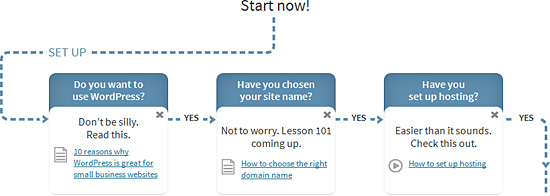
Flowchart + links + video = something bigger. Here’s another recent example by the folks at Seer Interactive, an interactive content piece called “How Do They Make Money”:
At first glance, it looks like an infographic, but click on any company logo and you’ll see the real content in action:
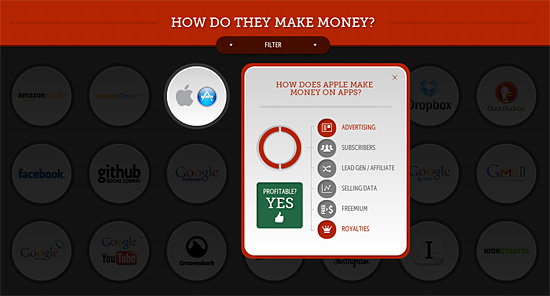
Again, if you want to over-simplify, it’s just icons + pop-ups, but the whole effect is a useful and professional piece that really engages people. Both of these examples also clearly have a lot of research and effort behind them.
3. Big Content Can Be Small
Big content needs big concepts, but it doesn’t have to be lengthy. One of my first introductions to big content was a 1-page PDF I created back in February of 2009, a 25-point usability checklist. What was big about it? Well, even though it was only a single page, it represented not only years of client experience, but 30-40 hours of work just to create the list itself. I distilled a ton of usability texts and much longer checklists and combined that with my own experiences to create something that I really felt represented a lot of knowledge in a small space.
This was also my introduction to just how successful big content can be. The piece not only attracted traffic and links, but it ended up in books and classes and introduced me to dozens of respected members of my industry. What’s more, this content had real staying power – even though I wrote it over 3-1/2 years ago and have barely touched my consultancy blog this year, here are the 2012 traffic stats for just that one piece:

While this content took a lot of up-front effort, I’ve spent almost no time on it in 2012, and yet it drove almost 50K unique pageviews and over half the entrances to my site. It’s an investment that’s paid itself off a hundred times over.
II. Benefits of Big Content
Now that you have some idea of what I mean by “big content”, let’s dive right into the tangible benefits. Sure, big content drives traffic and links, but so does any successful content. I want you to understand what sets big apart, and why it’s more than just quantity…
1. Big Content Has Longevity
People come back to big content, as my experience with the usability checklist illustrates. If you put enough effort and research into a piece and make it truly unique, it’s almost naturally “evergreen”, even long after publication. There’s a step even beyond evergreen, though – big content has a way of creating audience or at least being in the right place at the right time when that audience is ready for it.
Let me give you an example. Another big content piece I’ve been deeply involved in is the Google Algorithm History here on SEOmoz – not only is it a big piece in scope, but we’ve actively updated it since launch, making it somewhat unique in the realm of historical posts. I intended it to be a “living” document.
While the Algo History has been popular, it started out a lot like any other piece of content – it had an initial spike that then settled into a steady hum. This is the first two months:

While the initial spike was respectable (just over 9K pageviews), this is a pretty typical pattern for our blog posts – a big opening day that levels off in a few days. Admittedly, the Algo History did keep on producing traffic, but the rest of 2011 was a steady trickle (in the realm of 200-400 pageviews/day). Overall 2011 traffic to the page was about 63K unique pageviews.
This pattern continued for the first couple of months of 2012 – there was some slow build-up, but nothing earth-shaking. Then, along came April:

On April 25th, traffic to the page spiked. Recognize that date? It’s the day after Penguin, and the start of a newfound interest in the algorithm. Remarkably, that interest has stayed steady, even months after the initial Penguin update, and the page has topped 200K unique pageviews for the first 9 months of 2012.
Long story short, the Algo History isn’t just “evergreen” – it’s sprouted an entire forest. Big content is positioned to be ready when your industry changes – it has the trust and authority to capitalize on the moment, whenever that moment arrives.
2. Big Content Is A Barrier to Entry
Remember what I said about easy not giving you a competitive advantage? Easy is easy to copy, but big builds barriers. The Algo History wasn’t the first piece of its kind, so we knew we had to do it bigger and better – once we were done, we raised the bar for everyone after us. I’m not conceited enough to think that no one can ever write about the topic again or that someone won’t do it better someday, but expectations are higher now, and that makes the competition’s job tougher. In search, these barriers even become self-building – big content that gets links and social mentions climbs the rankings, getting more links, and on and on. It builds traffic, it builds brand, and it builds walls that people who are stuck on easy will never be able to climb.
3. Big Content Drives Big Ideas
Easy is an assembly line process – it creates more of the same and is ultimately a numbers game. Big fosters innovation and can change the process. When we were researching the Algo History, I was left with a nagging feeling – we just didn’t know much about the Google algorithm. So, I started thinking about ways we could measure how much Google changes day-to-day, and months later MozCast was born:
That was just the beginning, though. MozCast wasn’t just big content – it was an engine to generate and analyze data that very few people had. In August, I scored an SEOmoz first (for me) – we scooped the big news sites and spotted the 7-result SERP launch. Not only that, we were able to show how widespread those SERPs were – my post and data were picked up by SEL, SER, and even The Guardian. Since then, MozCast data has helped power a handful of other popular posts on the SEOmoz blog
Sorry, I’m not trying to rewrite my resume here, but I want to hammer in a point. What started with one piece of big content (the Algo History) turned into a new tool (and public website), a new data set, a handful of content, and an entire new direction for me. I had actually built content that generated data that generated new content. Put simply, my content was creating content. That’s pretty amazing, if I do say so myself.
III. Managing Risks & Costs
So, I know what you’re thinking – sure, you guys just got $18M worth of funding. What about the rest of us? This is the #1 myth I want to dispel – big content takes effort, but it doesn’t have to cost a fortune, and there are ways to manage the risks. Here are three tactics that have made all the difference for me and made every piece of big content I’ve built possible…
1. Build a Minimum Viable Product (MVP)
Sometimes, you just don’t know if something is going to work until you try it. MozCast started out as a concept, a couple of equations, and a 50-keyword crawler (built in PHP and MySQL). I built the back-end myself – including the current version – and I only got the team involved when I had proven to myself and them that the data was interesting. This kept our risk and investment very low, and when I finally had something worth building, the team was happy to get involved.
There’s always risk, of course, but the idea of an MVP goes far beyond just products. A big blog post can start with an outline, a video can start with a storyboard, an infographic can start with a back-of-the-napkin sketch. Build enough that you can get the idea in front of people and in motion, and see if it takes on a life of its own. If it does, you’ve got something. If not, you aren’t out much time and money.
2. Don’t Bet the Farm on One Idea
Once you’re comfortable with Minimum Viable Products, you start to get more comfortable with failure, because failing is no longer catastrophic. A lot of my content is built on data, for example, and so I almost always have 2-3 experiments going on. In other words, I’m collecting data for 2-3 ideas. About two out of three of those either don’t work or just aren’t interesting. So what? The one that does work is usually more than enough to make up for the failures. The real risk isn’t that one of my ideas will fail – the real risk is only having one idea in play.
3. Find Your Big Evangelists
One of the tricks of big content is that someone has to really own it – it’s going to take time, organization, and follow-through. You don’t need a big agency, though, or the industry’s foremost expert – you just need someone who’s motivated.
One of the first big content pieces that really caught my eye was an epic guide to linkbait created by Distilled. It’s a wealth of information, including original and curated content that clearly took a lot of effort. Here’s the kicker, though – this project was created during a two-week internship by Ed Fry, who was only 16 years old at the time. Obviously, it was a team effort, and I’m not trying to say that Ed is just your typical intern – he’s a bright guy with a bright future – but he’s not a seasoned industry veteran and he doesn’t have an office on Madison Avenue. What he had was the motivation to see a big project through, and Distilled was smart enough to tap into that passion. Sometimes, “big” is just about finding someone with the drive to follow through.
Now, It’s Your Turn
I hope I’ve convinced at least a few of you to stop thinking small. The truth is that, until you produce something big, you won’t really understand the benefits and the momentum that come out of it. I’m just now beginning to see how the Algo History has opened up all new areas for me and for the content I’ll create next. At the same time, I’ve got systems running daily collecting new data to build tomorrow’s content. My only regret is not investing in big ideas sooner, because the interest is compounding every day.

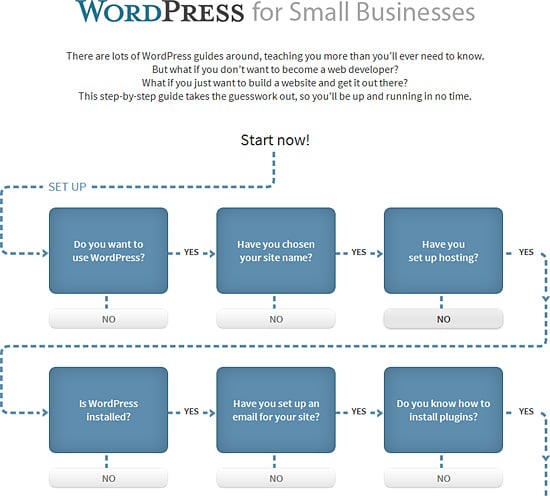
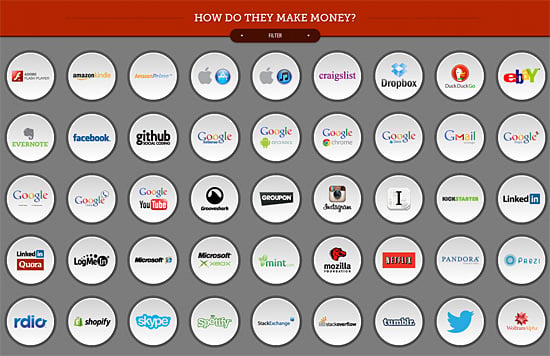
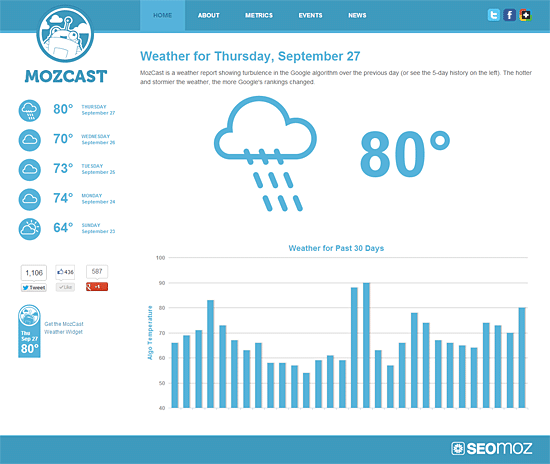



Comments
Please keep your comments TAGFEE by following the community etiquette
Comments are closed. Got a burning question? Head to our Q&A section to start a new conversation.